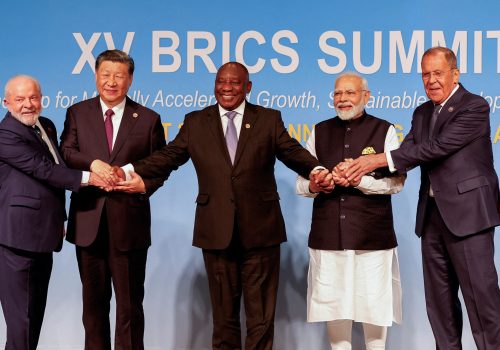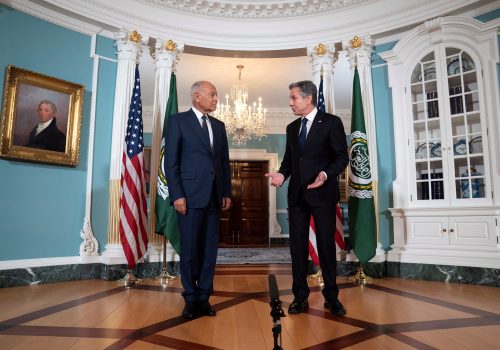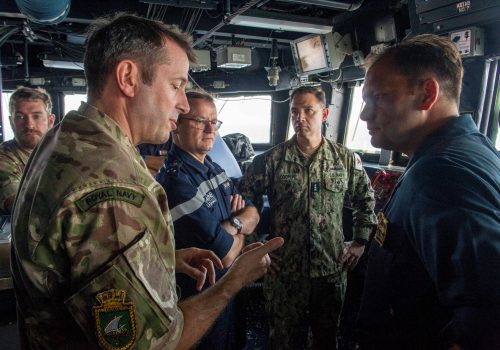The India-Middle East Corridor: a Biden Road Initiative?
On September 9, the White House released a Memorandum of Understanding (MoU) announcing the establishment of an “India-Middle East-Europe Economic Corridor” (IMEC). Launched on the sidelines of the G20 Summit convened by India, the new initiative aims at nothing less than building “enhanced connectivity and economic integration between Asia, the Arabian Gulf, and Europe.” The MoU was signed by India, three European partners (France, Italy, and Germany), the European Union, and two Gulf states (Saudi Arabia and the United Arab Emirates (UAE)). Though Israel did not formally commit to the MoU, it is widely believed that the country will be involved in the future of the project.
Since its announcement, IMEC has garnered much attention and much criticism. Economists and regional experts expressed their reservations on the feasibility—both politically and financially—of a corridor that would redraw the map of infrastructure across Eurasia. But such skepticism is missing the point of IMEC in the first place. The project serves primarily as a US diplomatic tool to counter China’s influence in the Middle East. In fact, IMEC should be considered in the same light as Xi Jinping’s Belt and Road Initiative (BRI): an ambitious foreign policy project that captures the world’s attention, even though it is unlikely to deliver on its lofty promises.
The maritime routes and railroads of IMEC might never materialize but they come at a critical time for the administration of President Joe Biden. In the past five years, Beijing’s clout has grown in earnest in the Middle East. Since the launching of the BRI in 2013, Gulf states have embraced Xi’s foreign policy signature and sought to get Chinese investments for their own infrastructure projects—be it Abu Dhabi Port, Hamad Port in Qatar, or Kuwait’s Silk City—or their digital networks, as reflected by the flurry of contracts awarded to Huawei.
Most recently, Gulf states have also eyed China-led multilateral arrangements. In December 2022, during Xi’s visit to Saudi Arabia, the six members of the Gulf Cooperation Council endorsed China’s newest projects: the Global Development Initiative and the Global Security Initiative. Meanwhile, Saudi Arabia became a dialogue partner of the Shanghai Cooperation Organization last March. In August, the Kingdom was invited—alongside Iran, the UAE and Egypt—to become a member of BRICS, an informal gathering composed of Brazil, Russia, India, and South Africa (BRICs surfaced in the 2000s and their meetings act as an alternative to Western-led fora like the G7). Furthermore, last March, China brokered a reconciliation deal that resumed diplomatic relations between Saudi Arabia and Iran after seven years.
During the same period, the US faced its own issues with Middle Eastern partners. Firstly, when Israel chose a Chinese company to operate the new Haifa port, the US Navy threatened to stop its visits in the area. Then, negotiations with the UAE over the sale of the F-35 stalled because of American concerns over China’s growing security presence in Abu Dhabi. Finally, Joe Biden’s first visit to Saudi Arabia in July 2022 was complicated by his previous statements on wanting to make the country “the pariah that they are.” By the time Saudi and Iranian foreign ministers shook hands in Beijing, it looked as if China had indeed replaced the US as the external power calling the shots in the Middle East.
This is where IMEC comes into the equation, as it seeks to reverse this recent trend. However, the most effective part of its narrative is that it is not about China, but about integrating the economies of US partners. IMEC does not pressure countries to make a choice between Beijing and Washington—it bets on the idea that this choice will present itself naturally.
The idea of IMEC also works because it builds on several diplomatic initiatives that US diplomats have pushed forward in the past five years. It is the continuation of the Abraham Accords, which normalized ties between Israel and the Gulf states, and the I2U2 minilateral, which promotes economic cooperation between Israelis, Indians, and Emiratis. IMEC is also made possible thanks to the US’s ongoing efforts to reach a normalization agreement between Saudi Arabia and Israel, although this one may not yet materialize.
On the other hand, one might argue that the IMEC narrative does not reflect the very real challenges that lie ahead. Just like China’s BRI, IMEC gives the illusion of a regional roadmap linking ports and railroads from Mumbai to Piraeus via Dubai and Haifa. But technical specificities are scarce. Official statements talk of two separate corridors: one maritime route would connect India to the Arabian Gulf while a railway would link the Gulf to Europe. The funding to achieve this remains unknown; the first MoU does not specify the costs involved, though media reports speculate estimates varying from $8–20 billion. Additionally, there is no information on how the financial burden will be shared between the US and its partners. When asked, government officials retort that all those details will be ironed out in future meetings.
IMEC may also find itself at the mercy of Middle East politics. Today, the region is enjoying a cool period after major players lowered tensions two years ago, but this could swiftly change. Previous joint infrastructure projects in the Gulf have failed because of national rivalries. For instance, Qatar and Bahrain cancelled a planned causeway after Manama joined Saudi Arabia to impose a blockade of Doha in 2017. In 2005, Riyadh opposed another UAE-Qatar causeway project that would have passed through Saudi territorial waters.
The two key Gulf states in IMEC, Saudi Arabia and the UAE, have been increasingly at loggerheads. The Emiratis have long been frustrated by Saudi Arabia’s handling of the Yemen war and make no secret of their support to the secessionist forces in the South who openly challenge the Saudi-backed government. On the flip side, Riyadh’s modernization plans threaten Dubai’s economic model as the Kingdom pressures international firms to relocate their regional headquarters to Saudi Arabia. Finally, an unsettled border dispute between both countries has been put on the backburner for most of the last decade, but it could easily resurface.
IMEC also causes concerns among other regional US partners that feel sidelined. Turkey’s President Erdogan asserted that “there is no corridor without Turkey” and reminded relevant players that Ankara is already committed to another project that links the Gulf, Iraq, and Europe via Turkey. Other Gulf states like Oman and Qatar may also feel left out. For them, IMEC might look like a policy tool forcing them to normalize relations with Israel. Prime Minister Benjamin Netanyahu clearly made that link during a speech at the UN General Assembly, talking of IMEC as a “blessing” and a project that will turn Israel into “a bridge of peace and prosperity between these continents,” eventually “creat[ing] a new Middle East”.
All those issues may jeopardize the feasibility of IMEC, but it does not erode the true purpose of the project, which is less about the economics of tomorrow than the politics of today. For several years, the US wrongly assumed that denouncing China’s BRI as “predatory economics” would lead its Middle Eastern partners to distance themselves from Beijing. This did not work. Now, IMEC offers a different approach and can rally local allies. While it might not live up to its promise in the long run, it creates a new narrative for US diplomats—one that is much more likely to appeal to India, Gulf states, and Israel.
Jean-Loup Samaan is a nonresident senior fellow with the Atlantic Council. He is also a senior fellow at the Middle East Institute of the National University of Singapore. Follow him on Twitter: @JeanLoupSamaan.
Further reading
Fri, Aug 25, 2023
The BRICS come to the Middle East and North Africa
MENASource By Mark N. Katz
For Egypt, Saudi Arabia, and the UAE in particular, joining BRICS is a statement that while they cooperate with the United States and the West, they also cooperate with Russia and China
Tue, Aug 8, 2023
Could a regional bloc work in the MENA or is it a fool’s errand?
MENASource By Negah Angha
Addressing the regional conundrum requires transcending the traditional boundaries of geopolitical competition.
Tue, Jun 20, 2023
The way for the US to ensure Gulf security is through partnership, not policing
MENASource By
As the United States continues to work with the Gulf on security, expect blips. Despite that, Washington can get this partnership back on course.
Image: New Delhi, Sept 9 (ANI): Prime Minister Narendra Modi delivers his remarks during the launch of Partnership for Global Infrastructure and Investment (PGII) and India-Middle East-Europe Economic Corridor connectivity on the sidelines of the G20 Summit, as US President Joe Biden, Saudi Arabian Prime Minister and Crown Prince Mohammed bin Salman bin Abdulaziz Al Saud and United Arab Emirates (UAE) President Sheikh Mohamed bin Zayed Al Nahyan look on, in New Delhi on Saturday. (ANI Photo)No Use India.


